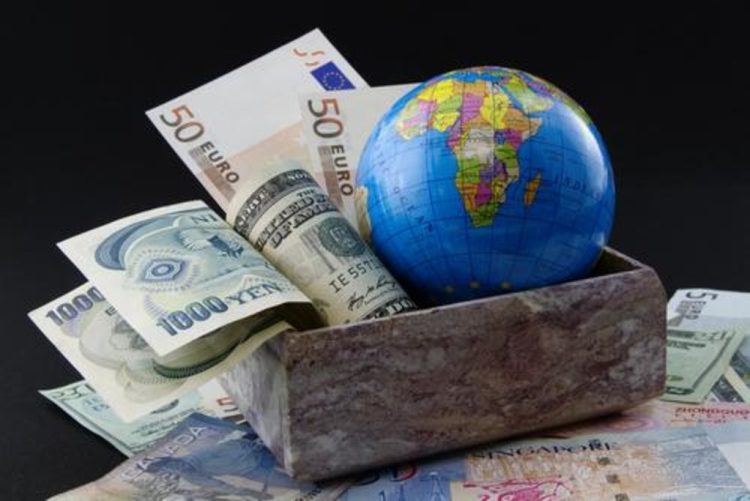For decades, China has reigned as the crown jewel of emerging market investment, drawing global capital through its vast labor pool, export-oriented growth, and government-led modernization. But in recent years, a tectonic shift has been quietly underway. Geopolitical tensions, demographic shifts, supply chain diversification, and regulatory overhangs have begun to erode China’s appeal. In its place, Southeast Asia—once viewed as a supporting actor—is emerging as a compelling alternative. The question now dominating boardrooms and trading floors: is ASEAN the new magnet for global capital?
The Great Rotation: Why China is Losing Its Luster
To understand why capital is flowing out of China, one must look beyond the headlines. While GDP growth remains positive, the structural underpinnings of China’s investment narrative have weakened. First, demographic decline is no longer a forecast—it’s reality. In 2023, China’s population shrank for the first time in six decades, and the labor force is expected to contract by over 100 million by 2040. This puts pressure on productivity, domestic demand, and long-term potential output.
Second, Beijing’s unpredictable regulatory crackdowns—on tech, education, gaming, and even real estate—have spooked foreign investors. The abrupt cancellation of Ant Group’s IPO in 2020, the dismantling of the tutoring sector, and restrictions on data flow and capital movement have all added to a sense of policy risk and opacity.
Third, China’s “zero-COVID” policy—long after the rest of the world reopened—sharpened concerns about supply chain reliability. Apple, Samsung, and numerous manufacturing giants have begun actively relocating production to hedge exposure.
Finally, the U.S.-China strategic rivalry has escalated from trade tariffs to chip wars and tech bans. Institutional investors are finding it harder to justify long-term allocations to a market increasingly isolated from Western capital flows and technological ecosystems.
ASEAN’s Rise: A Region Redefining Its Value
Enter Southeast Asia. The ten-member ASEAN bloc—comprising Indonesia, Vietnam, Thailand, Malaysia, the Philippines, Singapore, and others—is drawing attention not just as a geopolitical hedge, but as a growth engine in its own right. The region boasts a combined population of over 680 million, with a median age under 30 in most member states. Urbanization is booming, middle classes are expanding, and digital adoption is surging.
Vietnam is often cited as the “next China” for manufacturing. It has attracted over $30 billion in annual FDI in recent years, hosting production for Apple, Intel, and Samsung. The country offers political stability, trade openness, and a young, tech-savvy workforce. Malaysia and Thailand are benefiting from the global semiconductor boom, while Indonesia—the region’s largest economy—is making bold bets on green energy, EV battery supply chains, and digital infrastructure.
Meanwhile, Singapore remains the financial gateway, offering rule-of-law reliability, advanced logistics, and deep capital markets. Even smaller economies like the Philippines are gaining traction through robust remittance flows, English fluency, and a thriving BPO sector.
Collectively, ASEAN’s GDP surpassed $3.9 trillion in 2023, and the IMF projects 4.6% average growth through 2026—outpacing most of the developed world.
Institutional Sentiment: From Cautious to Bullish
Wall Street has taken notice. BlackRock’s 2024 Emerging Markets Outlook upgraded ASEAN to “strategic overweight,” citing structural reforms, consumption-driven growth, and rising digital ecosystems. JP Morgan echoed similar sentiments, highlighting “regional resilience” and “capital absorption capacity.”
Venture capital has followed suit. Startups in Indonesia, Vietnam, and the Philippines collectively raised over $12 billion in 2023, defying the global VC slowdown. Fintech, e-commerce, healthtech, and edtech are booming thanks to the region’s mobile-first demographics and underbanked populations.
Private equity is also shifting gears. According to Bain & Company, ASEAN-focused PE funds raised nearly $9 billion in dry powder in 2023 alone, with investors citing attractive valuations, exit opportunities, and maturing deal ecosystems.
Even manufacturing FDI is pivoting. Japan, South Korea, and Taiwanese firms are ramping up investments in Indonesia and Vietnam to de-risk from China. The EU-Vietnam Free Trade Agreement (EVFTA) and the Regional Comprehensive Economic Partnership (RCEP) are further smoothing trade flows and reassuring long-term investors.
The Digital Dividend: A New Frontier for Capital
Beyond traditional infrastructure and manufacturing, Southeast Asia’s digital economy is emerging as a core pillar of capital attraction. According to Google, Temasek, and Bain’s e-Conomy SEA 2024 report, the region’s digital economy is expected to exceed $360 billion by 2025.
E-commerce platforms like Shopee and Tokopedia, ride-hailing apps like Grab and Gojek, and digital wallets like DANA and MoMo are reshaping consumption and financial access. With smartphone penetration exceeding 70% in several markets and cashless adoption rising post-pandemic, fintech and insurtech startups are drawing billions in Series A to Series C funding.
Institutional investors love the “leapfrog” narrative: these markets are skipping legacy infrastructure and going straight to mobile banking, AI-powered logistics, and telemedicine. This agility, combined with data-rich ecosystems, makes ASEAN fertile ground for long-term tech capital.

Challenges That Still Lurk Beneath the Surface
Of course, no emerging region is without its risks. Governance varies widely across ASEAN—from democratic Indonesia to autocratic Cambodia—and so do business climates. Corruption, bureaucratic inertia, and uneven legal enforcement can slow project execution and raise investor caution.
Infrastructure, while improving, still lags in several countries. Ports, roads, and power grids in places like Myanmar and Laos remain underdeveloped. Political instability in Thailand and ethnic unrest in Myanmar also pose regional reputational risks.
Moreover, the region’s reliance on commodity exports—particularly palm oil, coal, and rubber—exposes it to price shocks and environmental scrutiny. Climate risk is non-trivial: cities like Jakarta and Manila are among the most climate-vulnerable urban areas globally.
Yet despite these challenges, the relative trend remains clear: ASEAN is becoming more investable, not less. Reform momentum, digitization, and investor diversification are gradually overcoming legacy weaknesses.
Capital Flow Data Tells the Story
Capital flow data backs up the narrative shift. According to the Institute of International Finance (IIF), net equity inflows into ASEAN hit a 5-year high in Q4 2023, with Vietnam and Indonesia leading the pack. Chinese equities, by contrast, experienced $65 billion in net outflows over the same period.
Sovereign debt issuance in ASEAN remains healthy and oversubscribed, with countries like the Philippines and Malaysia attracting strong foreign interest despite global rate volatility. Currency volatility has also been comparatively muted, with regional central banks managing to navigate the Fed’s tightening cycle without dramatic devaluation.
SWFs and pension funds are diversifying as well. Singapore’s GIC, Canada’s CPPIB, and Norway’s NBIM have increased allocation to ASEAN infrastructure and real estate. Even the Abu Dhabi Investment Authority recently announced a dedicated ASEAN investment desk.
A Complement, Not a Replacement—Yet
Importantly, most institutional investors do not see ASEAN as a full replacement for China—but rather as a complement. China’s scale, technological ecosystem, and supply chain dominance remain unmatched. However, ASEAN is increasingly viewed as a viable Plan B—or even Plan A in specific sectors like textiles, semiconductors, and digital services.
A Boston Consulting Group report put it aptly: “The Asia story is no longer just China—it’s China + ASEAN.” That “+” is where the capital conversation is heating up.
What This Means for Investors
For retail and institutional investors alike, this trend demands attention. ASEAN-focused ETFs (like the iShares MSCI ASEAN ETF, ticker: ASEAN) are gaining volume. Country-specific funds targeting Vietnam (VNM), Indonesia (EIDO), and Malaysia (EWM) are being actively re-evaluated by asset managers.
Private investors are also gaining access through real estate platforms, P2P lending in the Philippines, and startup syndicates in Singapore. ESG-conscious funds are finding fertile ground in ASEAN’s solar, hydro, and green transportation initiatives—particularly in Vietnam and Indonesia.
In the medium term, ASEAN’s blend of demographics, reform orientation, and digital leapfrogging could make it one of the most compelling risk-adjusted bets in the global emerging market portfolio.
Conclusion: A Region at an Inflection Point
Southeast Asia is no longer riding China’s coattails—it’s writing its own investment narrative. While China remains indispensable to global trade and investment, ASEAN is rising as a region of choice for those seeking diversification, dynamism, and digital growth. From Jakarta to Hanoi, from Manila to Kuala Lumpur, capital is not just flowing in—it’s staying in.
The shift is not abrupt, nor is it complete, but it is unmistakable. For those willing to look past the clichés of frontier risk and embrace the contours of a changing Asia, Southeast Asia may indeed be the new magnet for global capital.














































